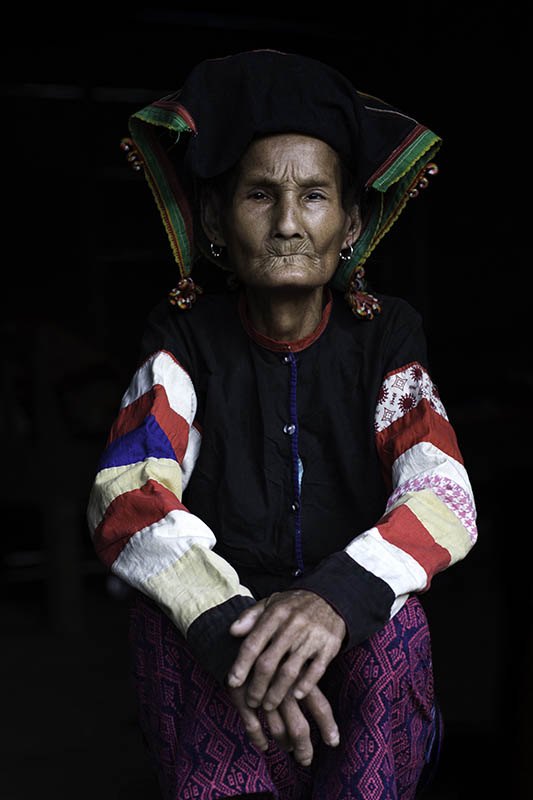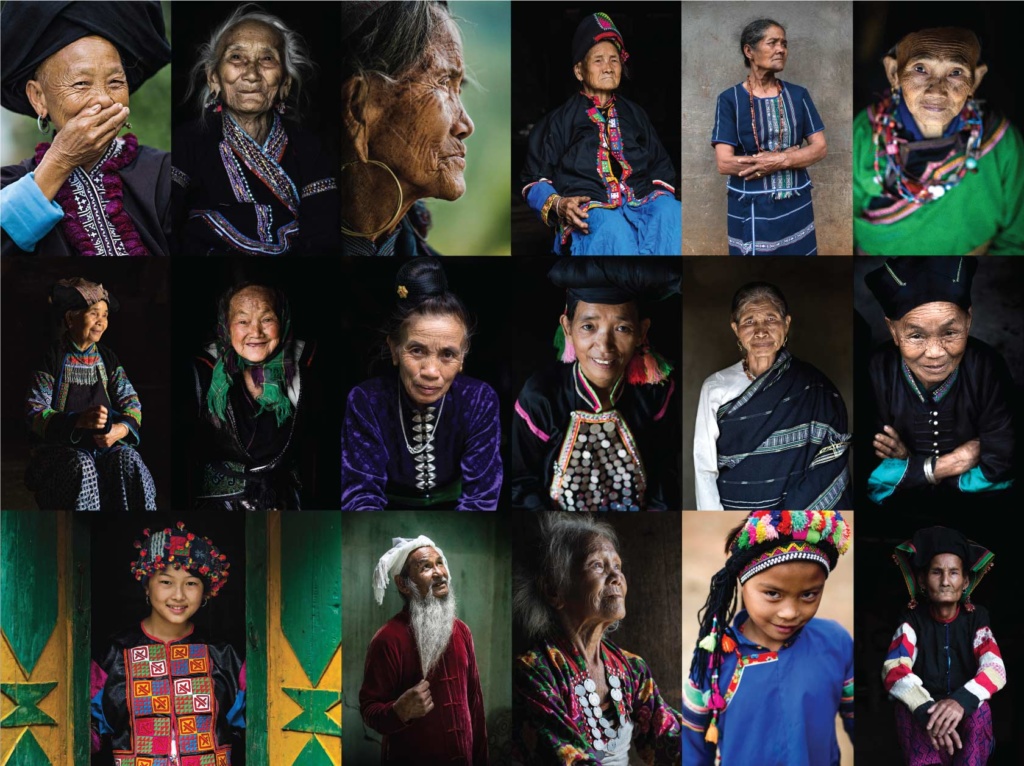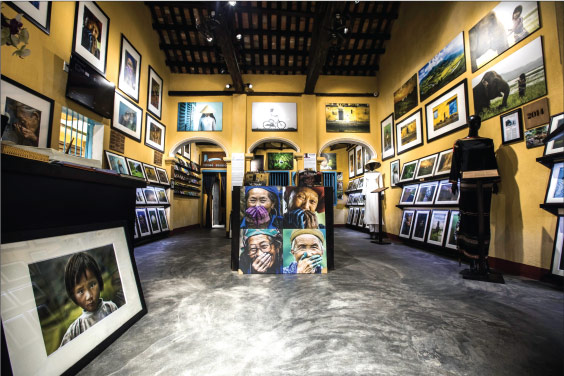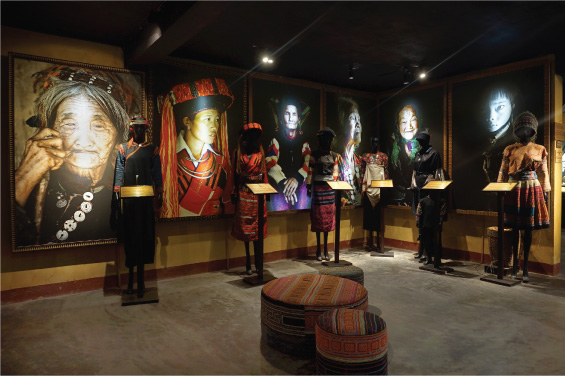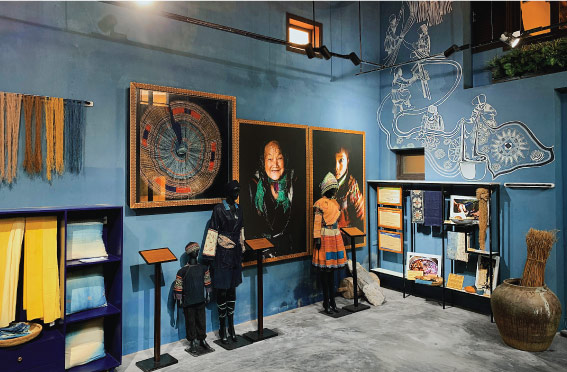The first thing you will notice upon entering the room is that the walls are painted the deepest blue. This is no ordinary paint. It is, in fact, the very same indigo dye that is used by ethnic groups such as the Dao, Nung, Hmong and the La Chi to create their incredibly rich blue textiles. Explanatory texts in the Indigo Room will teach you about the tribe’s sustainable process for making this non-toxic “paint” as well as textile techniques that have been passed down for centuries such as hemp harvesting and batik design. These techniques are an integral part of the culture, heritage, and in some cases, livelihood of these ethnic groups.
Indigo-dyed handicrafts and full-color portraits of the incredible women who spend their lives creating heritage textiles are on display in the room. Take a moment to browse through the products and pause over a cup of K’Ho coffee. For an incredible flavor, you can sweeten the coffee with organic honey harvested by the Co Tu tribe in the central highland mountains. Come and immerse yourself in the stories and remarkable traditions of Vietnam for an unforgettable experience in the Land of Indigo.

